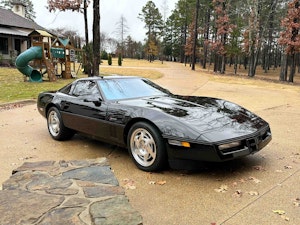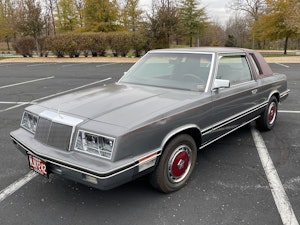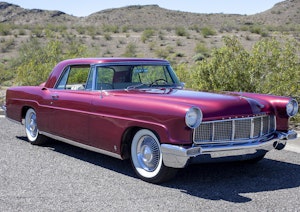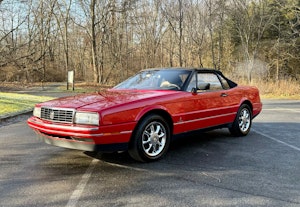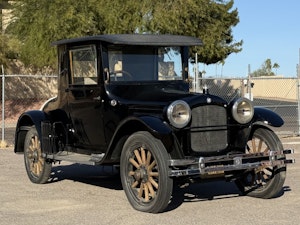Is there really a Bring a Trailer premium?

Not long ago, a Mercedes-Benz E63 S AMG went on Bring a Trailer after going unsold for months on Autotrader. In seven days, it sold for 10 percent higher than the original Autotrader asking price. We’ve all heard stories like this, especially of late. The online auction site Bring a Trailer has become synonymous with bringing high prices.
We wondered, however, if these high prices extend beyond the well-publicized breakout sales. The site currently averages more than 450 lots a week and accepts an astonishing array of consignments, from six-figure Japanese supercars to four-figure Firebirds.
“We have more premium and restored cars now, for sure, but we also have more drivers and projects and race cars submitted,” says Randy Nonnenberg, the site’s co-founder and president. “There is just more of everything.”
To what extent, if any, does a Bring a Trailer premium exist across the ever-growing number of cars being offered?
To estimate that, we started with two key pieces of data:
Marketplace
Buy and sell classics with confidence
- Vehicles that sold at a different venue then sold on Bring a Trailer within a year.
- Vehicles bought on Bring a Trailer then sold at a different venue within a year.
We found 1034 such sales dating back to 2016. Sure enough, vehicles going from a different venue to Bring a Trailer within a year sold, on average, for 8 percent more on Bring a Trailer than the previous sale price. Vehicles going from Bring a Trailer to a different venue within a year sold, on average, for 20 percent less.
Note that the drop-off in values from Bring a Trailer to a different venue has held within a similar range over the years, but the premium paid for vehicles on Bring a Trailer has drastically shot up in the last 18 months. In 2021 so far, vehicles bought elsewhere and “flipped”on BaT have sold for 24 percent more than their previous sale price, up from 9 percent in 2020 and 4 percent in 2019.
In short, the value buyers are putting on the Bring a Trailer experience has only increased in the last year, and has been exaggerated by the COVID-19 buying demand.
These flips offer compelling evidence that there is a Bring a Trailer premium, but we weren’t yet convinced, so we brought in another, even larger dataset—the Hagerty Price Guide. By comparing selling prices to the HPG value for the vehicle at the time of sale,* we can get a sense of BaT prices compared to standard market value averaged over a large sample size.
A challenge here is that our price guide offers different values based on condition—something we can’t consistently assess for vehicles sold online. So, we ran the numbers according to two condition ratings—“Good” (#3 in HPG parlance) and “Excellent” (#2). The chances the cars on BaT are collectively better or worse is pretty much zero—you generally find Condition #1 cars only at concours events, and Condition #4 cars have serious, easily spotted defects.
If we assume the average condition is “good” —the safest assumption since nearly half (49 percent) of the thousands of classic cars we inspect fall into this category—the average Bring a Trailer premium is huge. Between 2016 and 2019, the average premium above the price guide value for a vehicle sold on Bring a Trailer was 36 percent. In 2020 it jumped to 55 percent, and in 2021 to date it sits at 72 percent. This is double the average from 2016 to 2019.
If we assume that the average vehicle condition is “excellent” (#2), the case softens considerably, with a premium appearing only in 2021. Let us be clear, though, that it’s unlikely the typical vehicle condition is actually this high. True, BaT attracts low-mile cars—mileage averages around 25K, per our analysis of listings. But we define Condition #2 as “like-new, showroom quality,” a standard few classic cars meet. For reference, even the vehicles at this year’s Monterey auctions, on average, fell a bit short of this mark.
No matter the case, we see evidence of the narrative that during COVID-19 in 2020 and continuing into 2021, Bring a Trailer saw a large ramp-up in buyers who wanted a certain car—right now—and were willing to pay for it. Often above what outside viewers would see as the market value. If you think this is just evidence that prices overall are presently increasing fast, well, you're correct, but nowhere else are we seeing such disparities: Other major online auction sites see a premium over HPG value, too, but it is on average just one-third as big as Bring a Trailer’s.
That “above market” spending brought massive growth to the site. In the first nine months of 2021 Bring a Trailer sales hit $483M, double its total in all of 2019.
So, let there be little doubt: People are paying more on Bring a Trailer, especially now. The follow up question is why. There's more than one answer.
Bring a Trailer, naturally, credits itself.
“The engagement of our knowledgeable BaT Community, the quality of our listing descriptions, and our obsession with the truth are real differentiators that you can see right away, and they increase bidder confidence,” says Nonnenberg.
There’s truth to this assessment. With curated listings, professionally written descriptions, and a simple interface, Bring a Trailer figured out how put a slick, Web 2.0 spin on what is for many an intimidating experience. And the community, some 450,000 and counting, help potential browsers feel confident enough to bid. Those commenters can, at times, crush a car's prospects. Yet they also can act as cheerleaders, promoting a car and creating a party-like atmosphere that encourages bidding.
“When something really special or exceptional pops up, it most often leads to a vibrant discussion with sometimes hundreds of comments on a single listing,” noted Bring a Trailer head of auctions Howard Swig in a recent interview with UK Hagerty Price Guide publisher John Mayhead. “It’s common for a competitive bidding dynamic to ensue as the auction crescendos to an exciting finish.”
All true, yet other online platforms can now claim similar features. That’s where reputation comes in. Bring a Trailer benefits from the fact that it is the best-known player in this emerging space, thanks to its longevity and the fact that it is now owned by a large media corporation. Whether this or that feature is actually superior to competitors’—accurate or not—becomes less important than the simple fact that many classic car shoppers now think of BaT first, in the same way it no longer matters if Google is objectively the “best” search engine.
Indeed, Bring a Trailer likely benefits from on its own success. The very perception that it’s a place to make more money on a classic has, no doubt, attracted more sellers, which allows Bring a Trailer to remain selective in what it lists, even as it dramatically scales its business.
“We get to have our pick of many amazing listings now, where at the beginning, when we were the first to prove this curated online concept, some skeptical sellers were holding back a bit,” says Nonnenberg.
Going back to the average mileage of listings, we see they’ve remained constant since 2018. That growing quantity of quality cars, naturally, attracts more buyers. Call it a virtuous cycle. Or a feeding frenzy. Either way, it’s obviously good for Bring a Trailer. Sellers are quite pleased, too, even if they occasionally grumble about unruly commenters and post-sale snafus.
But what if you’re buying? That might depend on what you’re looking for and how much time you have to look. If you’re looking for the lowest price, there are now more online auction sites than ever, not to mention myriad private sellers (who still make up the vast majority of the collector car market). That said, we know plenty of successful businesses—both within and beyond the classic car world—that are able to charge more simply because their customers feel they’re not wasting time and aren’t being ripped off. Bring a Trailer, with its consistent online shopping experience and legion of commenters, has managed to create similar conditions.

